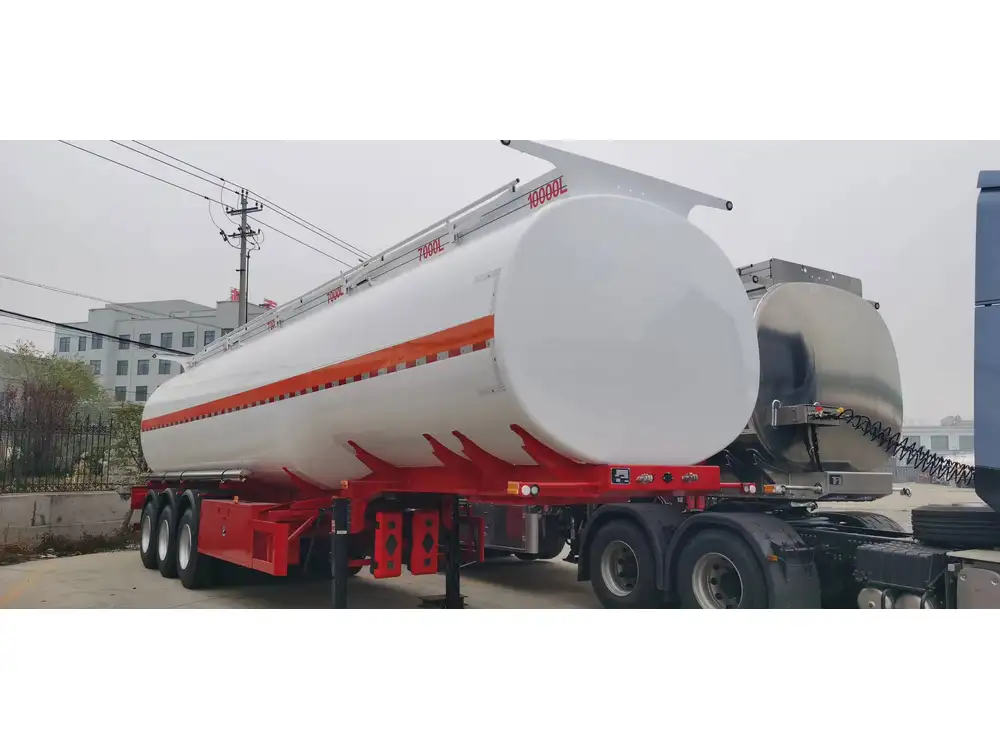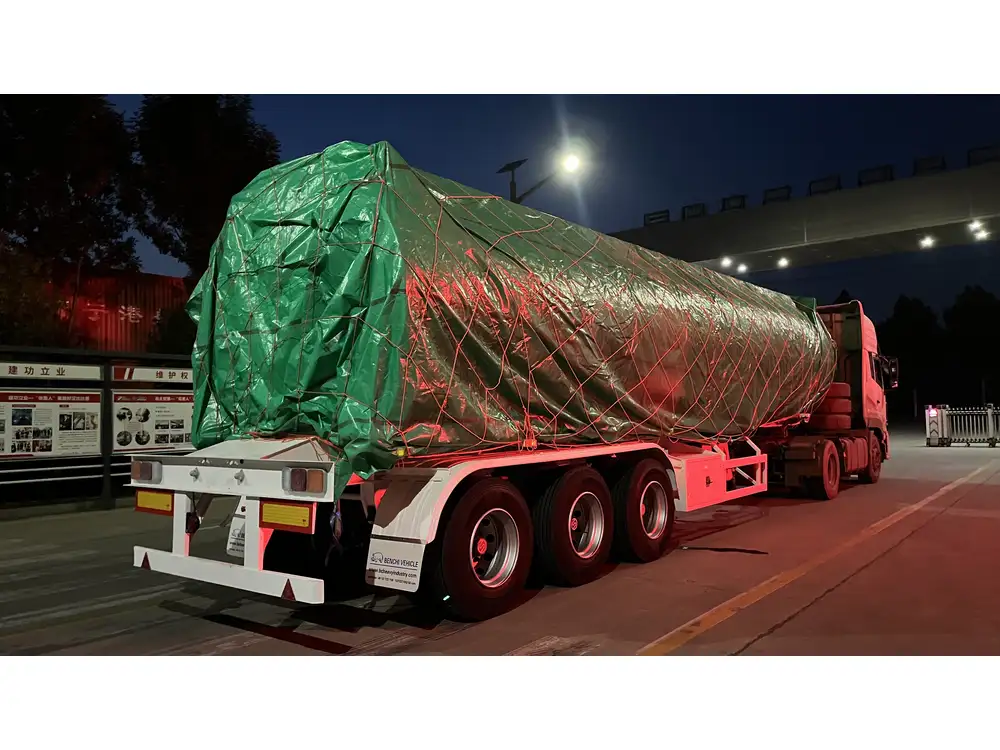Belly dump trailers, a staple in the construction and transportation industries, are designed with the specific intent of delivering bulk materials efficiently and effectively. The efficiency of belly dump trailers not only relies on the mechanics of the vehicle but also the materials that they carry and the regulations surrounding those payloads. In this article, we will delve deeply into “how much can a belly dump trailer haul,” exploring various factors that influence their capacity, specifications, and advantages.
Key Specifications of Belly Dump Trailers
Belly dump trailers come in various configurations and specifications that dictate their hauling capabilities. Recognizing these factors will enable you to select the right model for your specific needs.
Dimensions and Capacity
| Trailer Type | Typical Length (feet) | Width (feet) | Height (feet) | Typical Capacity (cubic yards) | Weight Limit (pounds) |
|---|---|---|---|---|---|
| Standard Belly Dump | 26-40 | 8 | 4-5 | 20-25 | 22,000-30,000 |
| Super Belly Dump | 40-53 | 8 | 5+ | 25-35 | 30,000-40,000 |
These specifications illustrate the versatility belly dump trailers can offer, allowing operators to transport various materials efficiently. However, manufacturers often provide exact capacities based on construction material and regulations, so it is crucial to refer to these for precise information.

Materials Transported
Belly dump trailers are exceptionally effective for conveying a wide range of materials, including:
- Sand and Gravel: For construction projects, belly dump trailers can transport large quantities of aggregates.
- Asphalt: Their design allows for smooth unloading of asphalt for road surfaces.
- Topsoil and Fertilizers: Agricultural applications benefit from their ability to unload bulk materials with minimal spillage.
- Construction Debris: Ideal for transporting demolition materials and other bulk trash.
The type of material largely influences a belly dump trailer’s weight distribution, which in turn affects the loaded trailer’s overall capacity.
Hauling Efficiency: Factors Influencing Payload Capacity
The maximum payload capacity of belly dump trailers is contingent upon various factors, which we will explore in greater depth:
1. Gross Vehicle Weight Rating (GVWR)
The GVWR is a critical specification that defines the maximum weight a trailer is rated to carry. For belly dump trailers, this rating ranges from 50,000 to 80,000 pounds, inclusive of the trailer’s weight, any portion of the load, and the tractor’s weight. Understanding GVWR enables operators to ensure compliance with state and federal regulations and avoid penalties while maximizing efficiency.

2. State and Federal Regulations
Each jurisdiction enforces its regulations concerning the maximum weight a vehicle can carry. Common limits include:
- Federal Regulation: Typically enforces a maximum of 80,000 pounds for combined weight of a truck and trailer on interstate highways.
- State Regulations: Vary by state; for instance, some states might implement special permits for loads exceeding set limits.
3. Load Distribution
Effective load distribution is crucial not only for safety but also for maximizing carrying capacity. A well-distributed load on a belly dump trailer optimizes performance and minimizes the risk of accidents or damage to the trailer. To facilitate excellent load distribution, remember to:
- Distribute materials evenly along the trailer’s length and width.
- Avoid overloading one side, which can lead to mechanical failure or accidents.
4. Trailer Design and Configuration
Belly dump trailers feature a distinctive design, typically with two hoppers that allow for quarter or half unloading through the belly compartment. Variations in design influence carrying capacity:
- Dual-Hopper Models: These are popular for their efficiency, allowing for the transportation of two different materials simultaneously or more efficient unloading.
- Single Hopper Models: Generally have slightly less capacity but can be suited for specific hauling needs.

Advantages of Belly Dump Trailers
Belly dump trailers provide a range of advantages that are hard to overlook when considering your hauling options.
1. Fast Unloading Times
One of the standout features of belly dump trailers is their rapid unloading ability. This benefit is particularly significant in construction projects where time is of the essence. The versatility of single or dual-chamber unloading options means that you can drop material in a smooth, controllable manner, increasing overall efficiency.
2. Versatility in Material Handling
From aggregates to clean fill and asphalt, belly dump trailers can handle various materials, making them an attractive option for contractors who require flexibility in their hauling operations. Their design accommodates materials of different densities and moisture levels.

3. Enhanced Stability
With a lower center of gravity, belly dump trailers deliver improved stability while on the road. This stability is important when transporting heavy materials over long distances or when navigating rough terrain.
Safety Considerations When Operating Belly Dump Trailers
Safety is paramount when it comes to operating belly dump trailers. Here are some critical safety measures and considerations:
1. Regular Maintenance
Maintaining trailers is essential for safety and performance. Regularly check:
- Tire pressure and tread depth.
- Brake function.
- Structural integrity of the trailer body and frame.

2. Observing Weight Limits
Always adhere to specified weight limits to prevent accidents and mechanical failures. Operators should be educated on their jurisdiction’s loading regulations to ensure compliance.
3. Training for Personnel
Ensure that all personnel operating belly dump trailers are properly trained. They should understand the operational mechanics and safety protocols related to loading, unloading, and transport.
Conclusion: Optimizing Your Hauling Experience with Belly Dump Trailers
When considering how much a belly dump trailer can haul, remember that various factors come into play, including dimensions, material types, regulations, and design configurations. A well-chosen belly dump trailer can significantly enhance efficiency and profitability for contractors and transportation companies alike.
By understanding the critical specifications such as the GVWR, load distribution, and adhering to safety guidelines, operators can maximize their hauling capacity effectively. Whether you are in the construction business or need to transport aggregate materials, belly dump trailers offer a multifaceted solution to meet your hauling demands.

Frequently Asked Questions
What is the average weight a belly dump trailer can hold?
- Belly dump trailers typically have a capacity of 20,000 to 40,000 pounds, depending on size and design.
Can belly dump trailers unload while moving?
- Some trailers are designed for moving unloads but can reduce material control; stationary unloading is preferred for accuracy.
What types of materials can be transported?
- Commonly transported materials include sand, gravel, asphalt, topsoil, and construction debris.
How do I ensure compliance with weight regulations?
- Familiarize yourself with local regulations, calibrate your equipment, and always verify load weights before transport.
What maintenance do belly dump trailers require?
- Regular checks for brake function, tire condition, and trailer body integrity are essential for safe operations.
In summary, selecting the right belly dump trailer can yield substantial operational benefits when tailored to specific material transport requirements. By keeping these parameters in mind, you can ensure your operations are both efficient and compliant with regulations.



